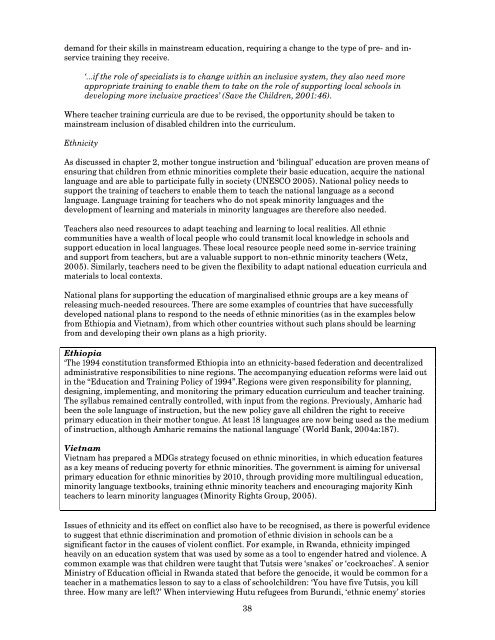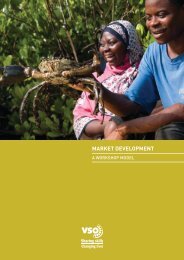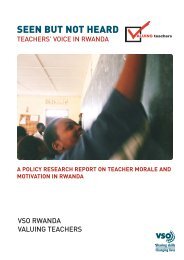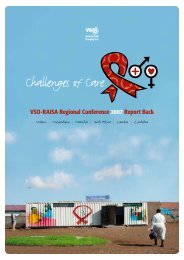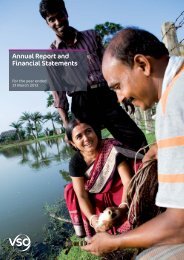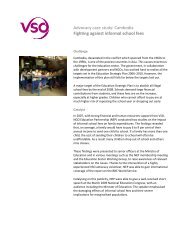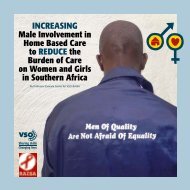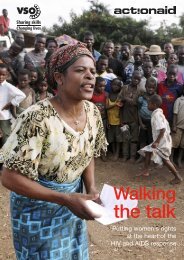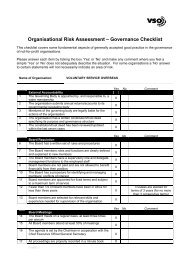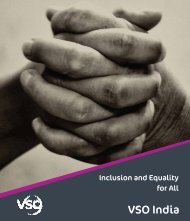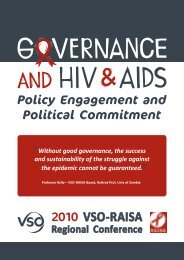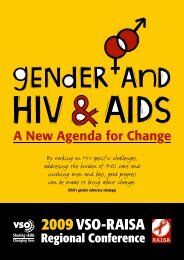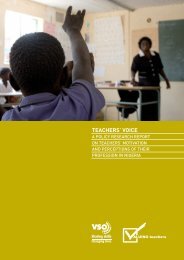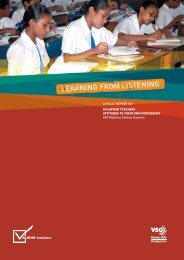Teachers for All â GCE policy briefing (566KB) - VSO
Teachers for All â GCE policy briefing (566KB) - VSO
Teachers for All â GCE policy briefing (566KB) - VSO
Create successful ePaper yourself
Turn your PDF publications into a flip-book with our unique Google optimized e-Paper software.
demand <strong>for</strong> their skills in mainstream education, requiring a change to the type of pre- and inservicetraining they receive.‘…if the role of specialists is to change within an inclusive system, they also need moreappropriate training to enable them to take on the role of supporting local schools indeveloping more inclusive practices’ (Save the Children, 2001:46).Where teacher training curricula are due to be revised, the opportunity should be taken tomainstream inclusion of disabled children into the curriculum.EthnicityAs discussed in chapter 2, mother tongue instruction and ‘bilingual’ education are proven means ofensuring that children from ethnic minorities complete their basic education, acquire the nationallanguage and are able to participate fully in society (UNESCO 2005). National <strong>policy</strong> needs tosupport the training of teachers to enable them to teach the national language as a secondlanguage. Language training <strong>for</strong> teachers who do not speak minority languages and thedevelopment of learning and materials in minority languages are there<strong>for</strong>e also needed.<strong>Teachers</strong> also need resources to adapt teaching and learning to local realities. <strong>All</strong> ethniccommunities have a wealth of local people who could transmit local knowledge in schools andsupport education in local languages. These local resource people need some in-service trainingand support from teachers, but are a valuable support to non-ethnic minority teachers (Wetz,2005). Similarly, teachers need to be given the flexibility to adapt national education curricula andmaterials to local contexts.National plans <strong>for</strong> supporting the education of marginalised ethnic groups are a key means ofreleasing much-needed resources. There are some examples of countries that have successfullydeveloped national plans to respond to the needs of ethnic minorities (as in the examples belowfrom Ethiopia and Vietnam), from which other countries without such plans should be learningfrom and developing their own plans as a high priority.Ethiopia‘The 1994 constitution trans<strong>for</strong>med Ethiopia into an ethnicity-based federation and decentralizedadministrative responsibilities to nine regions. The accompanying education re<strong>for</strong>ms were laid outin the “Education and Training Policy of 1994”.Regions were given responsibility <strong>for</strong> planning,designing, implementing, and monitoring the primary education curriculum and teacher training.The syllabus remained centrally controlled, with input from the regions. Previously, Amharic hadbeen the sole language of instruction, but the new <strong>policy</strong> gave all children the right to receiveprimary education in their mother tongue. At least 18 languages are now being used as the mediumof instruction, although Amharic remains the national language’ (World Bank, 2004a:187).VietnamVietnam has prepared a MDGs strategy focused on ethnic minorities, in which education featuresas a key means of reducing poverty <strong>for</strong> ethnic minorities. The government is aiming <strong>for</strong> universalprimary education <strong>for</strong> ethnic minorities by 2010, through providing more multilingual education,minority language textbooks, training ethnic minority teachers and encouraging majority Kinhteachers to learn minority languages (Minority Rights Group, 2005).Issues of ethnicity and its effect on conflict also have to be recognised, as there is powerful evidenceto suggest that ethnic discrimination and promotion of ethnic division in schools can be asignificant factor in the causes of violent conflict. For example, in Rwanda, ethnicity impingedheavily on an education system that was used by some as a tool to engender hatred and violence. Acommon example was that children were taught that Tutsis were ‘snakes’ or ‘cockroaches’. A seniorMinistry of Education official in Rwanda stated that be<strong>for</strong>e the genocide, it would be common <strong>for</strong> ateacher in a mathematics lesson to say to a class of schoolchildren: ‘You have five Tutsis, you killthree. How many are left?’ When interviewing Hutu refugees from Burundi, ‘ethnic enemy’ stories38


